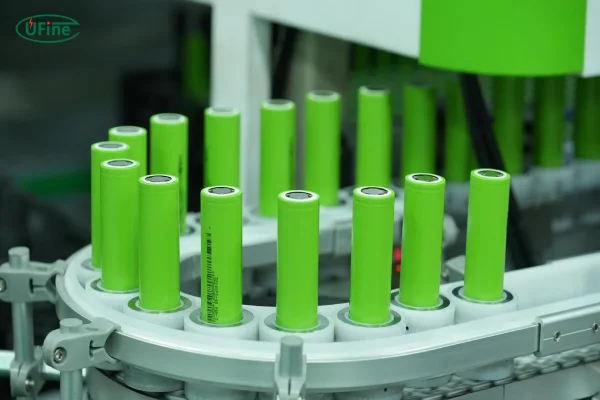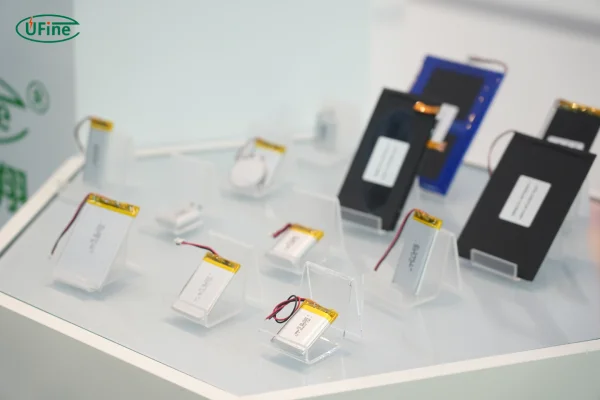Ternary lithium batteries have become a widely researched and applied energy solution in modern technology. Combining the benefits of nickel, cobalt, and manganese, these batteries deliver high energy density and good cycle performance. However, they also face challenges like safety and thermal management.
In this article, we’ll delve deeper into what ternary lithium batteries are, their advantages and disadvantages, and why they are significant in the energy storage industry
Part 1. What is a ternary lithium battery?
A ternary lithium battery is a rechargeable lithium-ion battery that uses three key transition metals—nickel, cobalt, and manganese—as the positive electrode material. This combination synergizes the benefits of:
- Lithium cobalt oxide: Good cycle performance.
- Lithium nickel oxide: High specific capacity.
- Lithium manganese oxide: Enhanced safety and reduced costs.
Using advanced techniques such as molecular-level mixing, doping, coating, and surface modification, these metals are synthesized into a stable, layered structure.
Material Composition
The term “ternary” in ternary lithium batteries refers to the three essential metals:
- Nickel (Ni): Enhances energy density and storage capacity.
- Cobalt (Co): Stabilizes the cathode structure and improves cycle performance.
- Manganese (Mn): Boosts safety and reduces production costs.
Each element plays a distinct role in battery performance, and their interactions influence energy density, stability, and cost-efficiency.
Key Features
- High energy density: Ideal for applications requiring compact, high-performance energy storage.
- Efficient charge and discharge rates: Ensures consistent and reliable power output.
- Thermal sensitivity: Ternary batteries are less resistant to high temperatures, requiring careful thermal management.
Part 2. Advantages and disadvantages of ternary lithium batteries
Advantages
-
High Voltage Platform
The voltage platform is critical for energy density and overall performance. Ternary lithium batteries feature a higher voltage platform compared to lithium iron phosphate (LFP) batteries, with a charging limit of 4.2V and a discharge platform of 3.6–3.7V. -
Superior Energy Density
Higher energy density means more power in a smaller, lighter package. This is particularly important in electric vehicles (EVs) and portable electronics. -
High Tap Density
Ternary lithium batteries have greater tap density than LFP batteries, leading to better volumetric energy efficiency. -
Versatile Applications
These batteries can be fine-tuned for different needs by adjusting the ratio of nickel, cobalt, and manganese, making them adaptable to various industries.
Disadvantages
-
Safety Concerns
Ternary lithium batteries are prone to thermal runaway when subjected to impact or overcharging. Larger-capacity models often struggle to pass safety tests like acupuncture and overcharge tests. -
Poor High-Temperature Resistance
At elevated temperatures, the structure becomes unstable, affecting safety and performance. -
Shorter Cycle Life
Compared to LFP batteries, ternary lithium batteries have a shorter lifespan, especially under high-power discharge conditions. -
Higher Protection Requirements
Advanced thermal management systems and protective mechanisms are essential to ensure safe operation, which can increase costs.
Comparative Analysis: Ternary Lithium Battery Pros and Cons
Part 3. Applications of ternary lithium batteries
Ternary lithium batteries are widely used in:
- Electric Vehicles (EVs): Their high energy density and compact size make them ideal for EVs, where space and weight are crucial.
- Consumer Electronics: Smartphones, laptops, and tablets benefit from their extended battery life and reliable performance.
- Energy Storage Systems (ESS): These batteries are used in renewable energy applications, offering high power output and efficiency.
- Power Tools: Their lightweight design and high energy output make them perfect for portable tools.
Part 4. Ternary battery density
One of the standout advantages of a ternary lithium battery is its high energy density, which directly impacts its performance and application versatility.
Voltage Platform and Energy Density
Energy density is a critical parameter for batteries, influencing how much power can be stored relative to size and weight. The voltage platform is an essential indicator of energy density, determining both battery performance and cost. A higher voltage platform equates to greater specific capacity, which means longer battery life for devices or vehicles using the same size and weight of the battery.
- Ternary Lithium Battery: Discharge voltage platform of 3.7V.
- Lithium Iron Phosphate Battery (LFP): Discharge voltage platform of 3.2V.
- Lithium Titanate Battery: Discharge voltage platform of only 2.3V.
With such a high discharge voltage platform, ternary lithium batteries deliver a significant energy density advantage over lithium iron phosphate, lithium manganate, and lithium titanate batteries.
This feature makes ternary lithium batteries ideal for applications like electric vehicles (EVs) and portable electronics, where space and weight are critical.
Part 5. The Best charging range for ternary lithium batteries
Maintaining an optimal charging range is crucial for extending the life and ensuring the performance of ternary lithium batteries.
Optimal Charging Range
The ideal charging range for a ternary lithium battery is between 20% and 80% capacity. Here’s why:
- When battery power drops below 20%, charging promptly prevents deep discharge, which can degrade the battery’s chemistry.
- Avoid charging beyond 80–90%, as overcharging can lead to capacity loss and reduced lifespan due to overheating and chemical instability.
Fast Charging and Efficiency
For new energy vehicles, most fast-charging systems are designed to work efficiently between 30% and 80% battery levels.
- Charging from 30% to 80% often takes only 30 minutes.
- Beyond 80%, the charging rate slows significantly, and the battery’s temperature rises, making it less efficient and cost-effective to charge fully.
Part 6. The correct way to charge a ternary lithium battery
Proper charging habits can significantly extend the lifespan and maintain the performance of ternary lithium batteries.
General Guidelines for Charging
- Avoid Complete Discharge: Don’t wait until the battery is completely drained. When performance declines (e.g., devices slow down or EVs show low power warnings), charge the battery immediately.
- Avoid Frequent Partial Charges: Repeatedly charging and discharging small amounts can strain the battery. Try to fully charge it within the recommended range (20%–80%).
- Charge Promptly After Full Discharge: While occasional full discharges won’t harm the battery, leaving it drained for extended periods can cause irreversible damage.
Best Practices for EV Batteries
- Keep the state of charge (SOC) above 20% whenever possible.
- Avoid frequent plug-and-unplug cycles during charging unless necessary.
- Prioritize slow charging over fast charging. Frequent fast charging generates more heat, which can reduce battery lifespan over time.
Part 7. How long is the lifespan of a ternary lithium battery?
The lifespan of a ternary lithium battery depends on usage habits, manufacturing quality, and environmental conditions.
Understanding Battery Lifespan
Lithium battery lifespan is typically defined as the point when its capacity drops to 70% of its nominal capacity under standard conditions (25°C, normal atmospheric pressure, and 0.2C discharge rate).
On average, the theoretical cycle life of a ternary lithium battery is around 800 cycles. However, this varies:
- Lithium Iron Phosphate (LFP): Approximately 2,000 cycles.
- Lithium Titanate: Up to 10,000 cycles.
For ternary lithium batteries, manufacturers often guarantee over 500 cycles under standard charging and discharging conditions. However, in practical use (e.g., in EVs), cycle life may be closer to 400 cycles due to variances in voltage and internal resistance within the battery pack.
Factors Influencing Lifespan
- Charge and Discharge Depth: Shallow cycles (10%–90%) can extend lifespan to at least 1,000 cycles. Deep discharges or overcharging can cause irreversible damage.
- Discharge Rate: High discharge rates accelerate capacity decay. Lower discharge currents allow the battery to operate closer to equilibrium voltage, preserving energy and longevity.
- Operating Temperature: High temperatures degrade the battery’s structural stability, reducing lifespan to under 200 cycles in extreme cases.
Extending Battery Life
To maximize lifespan:
- Use high-quality battery systems with robust thermal management.
- Avoid extreme temperatures and high-rate discharges.
- Follow optimal charging practices, such as maintaining the SOC within 20%–80%.
Part 8. Final words
The popularity of ternary lithium batteries stems from their ability to balance energy density, cost, and safety. They represent a middle ground between high-performance needs and affordability.
Moreover, advancements in material science are making these batteries safer and more durable, addressing some of their traditional shortcomings.
As battery technology continues to evolve, ternary lithium batteries are expected to become even more efficient and safer, solidifying their role in the future of energy storage. By understanding their advantages and limitations, users can make informed decisions to maximize their benefits.
Part 9. FAQs
-
Is charging a ternary lithium battery 100% or 90% better?
It is generally better to charge a ternary lithium battery to around 90% rather than 100% for regular use. Frequent full charges may reduce the overall lifespan of the battery. -
Which lithium battery is the safest?
Lithium iron phosphate (LiFePO4) batteries are considered the safest among lithium batteries due to their excellent thermal stability and lower risk of thermal runaway. -
What is the low-temperature performance of ternary lithium batteries?
Ternary lithium batteries typically perform less in low-temperature conditions than at normal temperatures. Their capacity and power output may decrease at colder temperatures. -
What is the general lifespan of a ternary lithium battery?
The general lifespan of a ternary lithium battery can vary depending on factors such as usage patterns, charging/discharging conditions, and quality. On average, they can last several years with proper care, typically ranging from 3 to 10 years.
Related Tags:
More Articles

Choosing Batteries for Trolling Motors Lightweight: Charger Options
Lithium batteries are best for trolling motors as they are lightweight long long-lasting, and efficient. This guide covers selection, charging, and care tips.
Finding 11.1 V LiPo Battery Near Me: B2B Supplier Strategies
Need 11.1V LiPo batteries near you? This guide helps B2B buyers source reliable suppliers, compare specs, and ensure safe, cost-effective deals.
11.1 V LiPo Battery 5000 mAh: Specs That Matter for Industrial Use
An 11.1V 5000mAh LiPo battery offers high capacity and stable power, ideal for drones, robotics, and industrial tools requiring long runtimes.
Lightweight Battery Packs for Trolling Motors: Top Features
Looking for the best lightweight trolling motor battery? This guide covers top features, battery types, and tips to boost your boating performance.
Safe Charging Protocols for Your 11.1V LiPo Battery Charger
Safely charge your 11.1V LiPo battery by following proper rates, using safety tools, and avoiding common charging mistakes.






